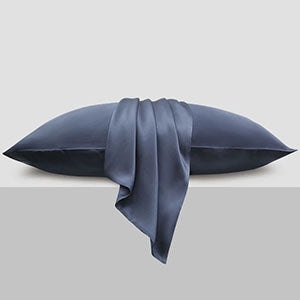Some knowledge about silk
- by asilklife
-

Silk is a natural protein fiber, some forms of which can be woven into textiles. The protein fiber of silk is composed mainly of fibroin and is produced by certain insect larvae to form cocoons. The best-known silk is obtained from the cocoons of the larvae of the mulberry silkworm Bombyx mori reared in captivity (sericulture). The shimmering appearance of silk is due to the triangular prism-like structure of the silk fiber, which allows silk cloth to refract incoming light at different angles, thus producing different colors.
Not exactly! Silk is produced by several insects, but generally, only the silk of moth caterpillars has been used for textile manufacturing. There has been some research into other types of silk, which differ at the molecular level. Silk is mainly produced by the larvae of insects undergoing complete metamorphosis, but some insects, such as web spinners and raspy crickets, produce silk throughout their lives. Silk production also occurs in Hymenoptera (bees, wasps, and ants), silverfish, mayflies, thrips, leafhoppers, beetles, lacewings, fleas, flies, and midges. Other types of arthropods produce silk, most notably various arachnids, such as spiders.
1. Sericulture
Female silkmoths lay anything from around 300 – 500 eggs at any one time. These eggs eventually hatch to form silkworms, which are incubated in a controlled environment until they hatch into larvae (caterpillars).
The silkworms feed continually on a huge amount of mulberry leaves to encourage growth. It takes around 6 weeks to grow to their full potential (about 3 inches). At this time, they’ll stop eating and begin to raise their heads – that’s when they’re ready to spin their cocoon.
Attached to a secure frame or tree, the silkworm will begin spinning its silk cocoon by rotating its body in a figure-8 movement around 300,000 times – a process which takes around 3 to 8 days. Each silkworm produces just one single strand of silk, which measures about 100 meters long and is held together by a type of natural gum, called sericin.
2. Thread extraction
Once the silkworms have spun their cocoon, they will eventually enclose themselves inside it and then it’s time to extract the silk threads. This is a crucial step in the silk production process as it ensures that there is no damage to the continuity of each thread.
Each thread is then carefully reeled from the cocoon in individual long threads, which are then wound on a reel. Some of the sericin may remain on the threads to protect the fibers during processing, but this is usually washed out with soap and boiling water.
3. Dyeing
When the silk threads have been washed and degummed, they will be bleached and dried before the dyeing process commences.
Traditional silk dyeing techniques take the dyes from natural resources found in the surrounding environment, such as fruit or indigo plant leaves. The threads will be soaked together in bundles, inside a pot of hot indigo leaves and water. This process will occur multiple times over days to ensure the proper color tone and quality.
However, these traditional dyeing methods have almost become extinct in the commercial manufacturing of silk. Advances in technology mean that manufacturers instead opt for using various dyes such as acid dyes or reactive dyes. This gives a greater range of choices in colors and shades to be able to serve wider demand.
4. Spinning
The traditional spinning wheel has always, and will always be an integral part of the silk production process. Although updated industrial processes are now able to spin silk threads much quicker, it simply mimics the functions of the classic spinning wheel.
The process of spinning essentially unwinds the dyed fibers onto a bobbin, so that they lay flat ready for the weaving process. This can be done in many different ways from hand-spinning to ring-spinning and mule spinning.
5. Weaving
Weaving is the process in which the final piece of silk comes together. There are many different ways in which silk can be woven – satin weave, plain weave, and open weave are most common, the finish of the silk will depend on the type of weave.
Generally, weaving involves interlacing two sets of threads so that they lock around each other and create a strong, uniform piece of fabric. The threads will be woven at right angles to each other, and the two different angles are called a warp and a weft. The warp will run up and down the fabric, while the weft runs across it.
6. Printing
Should a piece of silk require a special pattern or design, it will need to be printed after pre-treatment. This can be done in two different ways: Digital Printing or Screen Printing.
Digital silk printing uses a specially designed textile printer, using ink to transfer hand-drawn or digitally produced artwork onto fabrics.
Screen printing is the traditional, more hands-on method of essentially creating the same outcome – though in some cases, a bolder, more vibrant look may be achieved due to a thicker application of ink.
7. Finishing
To be deemed ready for use, silks must be finished. Finishing a piece of silk gives it that highly lustrous sheen that it is so commonly known for, and is the reason that the desired look and feel can be achieved.
Silk finishing can be done in many different ways, mainly by applying different chemical treatments which can add a host of valuable properties including fire resistance and crease-proofing.
-
Posted in
- silk












